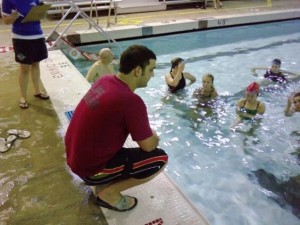What is the definition of near drowning?
This refers to an incident where an individual almost died due to suffocation under water. The inability to breathe under water can be very fatal. Consequently, anyone who is rescued from such a situation will require immediate first aid and emergency care.
[youtube url=”https://www.youtube.com/watch?v=UOLV02W-pbE” width=”220″]Why is it important to know what to do in such a scenario?
- This is a common occurrence in many parts of the world, especially when you consider that such accidents occur in the vicinity of relevant secureness. This means that with immediate first aid, there are good chances that lives can be saved.
- Many people overlook this, but a drowning person cannot call for help. It is imperative that you are constantly on the look out for such signs.
- A near drowning experience for children is very different from that of adults for the simple reason that children can drown even in bath water.
- Be constantly aware of your environment as this will help you spot an accident fast. Check if an individual in any body of water is swimming unusually as this could be indicative that they are getting tired. In addition, the body of such a victim will remain under water with only the head visible.
What are some of the leading causes of a near drowning experience?

- Swimming or engaging in various water activities when inebriated.
- Suicide attempts
- Trauma to the head while engaging in water activities. Individuals who get seizures may also experience this.
- Panic when swimming
- Leaving small kids alone near bodies of water and even bath tubs.
Signs and symptoms
The symptoms that are associated with this accident will differ from one individual to another depending on their age and the extent of time spent under water. The following symptoms will generally appear in a victim of near drowning accident.
- A swollen abdomen
- Skin will acquire a blue coloration which is easily noticed around the lips
- Shallow labored breathing.
- The skin of the victim will be cold and pale
- Emesis
- Periods of unconsciousness
What first aid should you give?
The following steps are to be followed if you notice that someone is drowning:
- Avoid putting yourself in harm’s way as this will not benefit anyone.
- Avoid getting into water or walking on ice to assist someone unless you are certain that both of you will be safe.
- Throw a rope that is linked to a floating object, say a life jacket, so that the victim of near drowning will tug along and you will be able to pull them to shore. With people who have fallen through thin ice, this may not be practical so you may want to get into the water only if you are trained in such rescue activities.
- If the victim has stopped breathing, start rescue breathing immediately. Breathe for the victim after every few seconds even as you transfer them to dry land.
- Give Cardiac Pulmonary Resuscitation (CPR) on arrival, checking to see that their head remains still due to the likelihood of head, neck and spine injuries.
- Get emergency medical aid.
